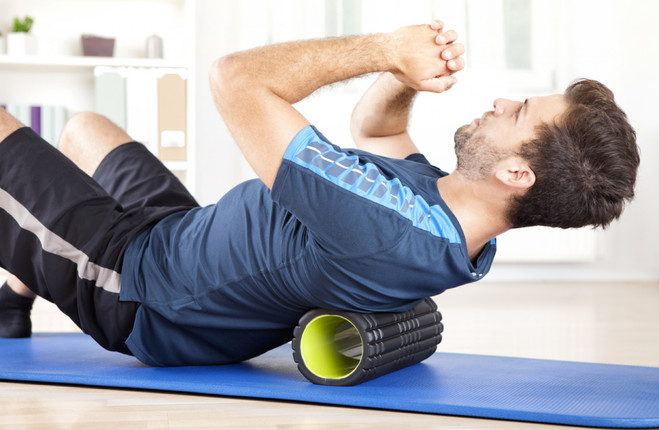IN A PREVIOUS article, I covered the five most common mistakes people make in the gym.
Like I have said before on many occasions one of the best approaches to your training sessions should be focused around doing the basics right and at times questioning ‘is your current training structure something you can still follow 20 years down the line?’
One of the most common errors I see on the gym floor is people not placing enough emphasis on mobility and flexibility work and instead constantly wanting to ramp up their heart rate at the start of every single session.
Mobility and flexibility standards are always the first thing I assess when working with a client for the first time and as a trainer I spend a lot of time working with office workers who spend long hours during the day in the seated position.
Not surprisingly, most arrive at the gym with poor mobility, lower-back issues, poor posture and a weak core, which makes training and doing simple things like hip hinges, squats, and other staples of a training programme very challenging.
One of the main causes of injury, burnout or fatigue is poor movement patterns and a lack of mobility with added volume, load or intensity. If your technique is bad or you are moving poorly it might just be because you’re extremely tight, stiff and inactive in certain parts of your body.
If you put aside 10-15 minutes of your session on focusing on these areas I can guarantee you that everything will become a little easier in the gym.
This article is not to show you your weaknesses but to help you combat them and give you that little bit more knowledge and structure.
Here are 5 simple pieces of equipment that will help you out.
Tennis/golf/lacrosse ball
Using a simple ball like this will come in handy to attack parts of the body that are quite stiff or knotted up.
Different areas of the body can be worked on here from the soles of the feet to the upper back and shoulders. Spend a few minutes here on parts of the body breaking down areas that feel quite tight.
It’s going to be a little uncomfortable and tender but trust me if you bring in exercises just like these drills it will help you out a lot more. Ideally beginners can start off using a soft tennis ball and then work their way up towards a golf ball.
Foam roller
Perhaps the most common mobility tool that gym goers will recognise. Most sports stores will now have these in stock.
The best brand out there for me is the trigger point range mostly because of their quality and durability factor along with the range of choices they have. In my opinion the foam roller is not a tool to spend your whole 15-20 minute warm up using.
Ideally you need it for mash and work on areas you are quite stiff and tight in. This ideally can be brought in before or after your session. A lot of people are quite stiff in the quads and latts and these are certainly two areas I would work on using the foam roller.
PVC pipe
Something a little different here. You will find some facilities will have PVC pipes on the gym floor. I find these great for a number of coaching and training drills.
One of my favorite training drills with the PVC pipe is working on my calves. Generally speaking a lot of people who spend time running will be extremely sniff in this area and it’s one of the main reasons why we get shin splints.
The drill above will be very handy for you if you find yourself constantly having to stretch out your calves. Apply the pipe underneath the glutes and sit into the pipe applying pressure down into the tissue. With your hands roll up and down on the areas that feel a little tender and bunged up.
Mini loop bands
If you are a regular reader of my column on The42 I am sure you are aware by now of my obsession with using bands for your training sessions. The list is endless why bands are so good to have in your kit bag but perhaps the best use for them is for activation drills.
Generally speaking most people need to activate their glutes and core every single day. One of the main reasons for lower back pain is due to a weak core and inactive glutes.
Bringing in drills like these is something I suggest to all my clients. There are so many exercises here from leg raises, x band walks to fire hydrants.
Power/resistance band
Similar enough to the band above and another tool that has 100s of uses.I use these types of bands mostly for mobility and flexibility work.
Almost every single area of your body can be worked on using these bands.From rounded shoulders ,stiff and inactive glutes to the most common tight hamstrings.
Above is an example of using the bands for tight hamstrings and is something I encourage people to work on as often as possible.
David Last is a personal trainer based in Dublin. For more information you can follow him on Facebook, Instagram and Twitter. Or you can send him a direct message here.
You can also see some of his previous articles here.
Subscribe to The42 podcasts here:

